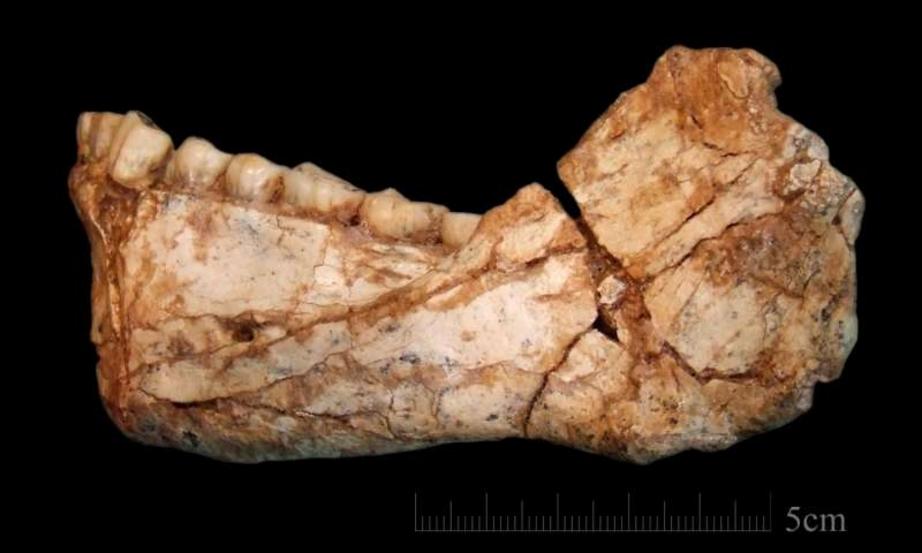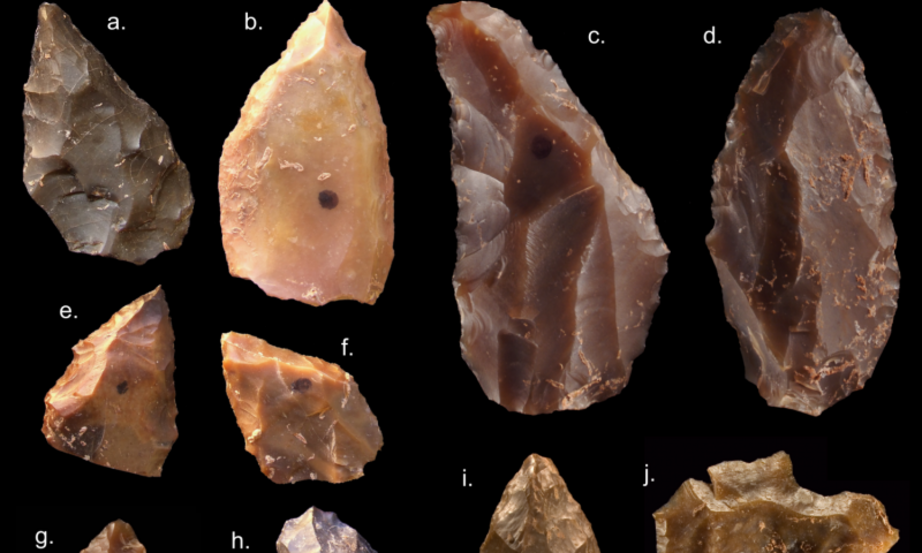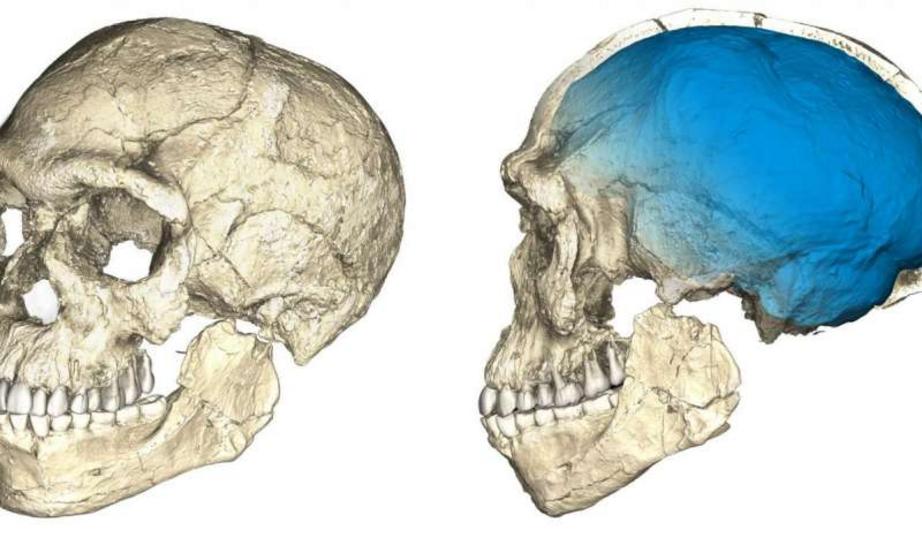Discovered: the oldest Homo sapiens fossils at Jebel Irhoud, Morocco
An international research team led by Jean-Jacques Hublin of the Max Planck Institute for Evolutionary Anthropology (Leipzig, Germany) and Abdelouahed Ben-Ncer of the National Institute for Archaeology and Heritage (INSAP, Rabat, Morocco) uncovered fossil bones of Homo sapiens along with stone tools and animal bones at Jebel Irhoud, Morocco.
The finds are dated to about 300 thousand years ago and represent the oldest securely dated fossil evidence of our own species. This date is 100 thousand years earlier than the previous oldest Homo sapiens fossils. The discoveries reported in two papers in the June 8th issue of the journal Nature by Hublin et al. and by Richter et al. reveal a complex evolutionary history of mankind that likely involved the entire African continent.
Both genetic data of present day humans and fossil remains point to an African origin of our own species, Homo sapiens. Previously, the oldest securely dated Homo sapiens fossils were known from the site of Omo Kibish in Ethiopia, dated to 195 thousand years ago. At Herto, also in Ethiopia, a Homo sapiens fossil is dated to 160 thousand years ago. Until now, most researchers believed that all humans living today descended from a population that lived in East Africa around 200 thousand years ago. "We used to think that there was a cradle of mankind 200 thousand years ago in east Africa, but our new data reveal that Homo sapiens spread across the entire African continent around 300 thousand years ago. Long before the out-of-Africa dispersal of Homo sapiens, there was dispersal within Africa," says palaeoanthropologist Jean-Jacques Hublin.
The Moroccan site of Jebel Irhoud has been well known since the 1960s for its human fossils and for its Middle Stone Age artefacts. However, the interpretation of the Irhoud hominins has long been complicated by persistent uncertainties surrounding their geological age. The new excavation project, which began in 2004, resulted in the discovery of new Homo sapiens fossils in situ, increasing their number from six to 22. These finds confirm the importance of Jebel Irhoud as the oldest and richest African Middle Stone Age hominin site documenting an early stage of our species. The fossil remains from Jebel Irhoud comprise skulls, teeth, and long bones of at least five individuals. To provide a precise chronology for these finds, researchers used the thermoluminescence dating method on heated flints found in the same deposits. These flints yielded an age of approximately 300 thousand years ago and, therefore, push back the origins of our species by one hundred thousand years.
"Well dated sites of this age are exceptionally rare in Africa, but we were fortunate that so many of the Jebel Irhoud flint artefacts had been heated in the past," says geochronology expert Daniel Richter of the Max Planck Institute in Leipzig (Germany), now with Freiberg Instruments GmbH. Richter explains: "This allowed us to apply thermoluminescence dating methods on the flint artefacts and establish a consistent chronology for the new hominin fossils and the layers above them." In addition, the team was able to recalculate a direct age of the Jebel Irhoud 3 mandible found in the 1960s. This mandible had been previously dated to 160 thousand years ago by a special electron spin resonance dating method. Using new measures of the radioactivity of the Jebel Irhoud sediments and as a result of methodological improvements in the method, this fossil's newly calculated age is in agreement with the thermoluminescence ages and much older than previously realised. "We employed state of the art dating methods and adopted the most conservative approaches to accurately determine the age of Irhoud", adds Richter.
 The mandible Irhoud 11 is the first, almost complete adult mandible discovered at the site of Jebel Irhoud. It is very robust and reminiscent of the smaller Tabun C2 mandible discovered in Israel in a much younger deposit. The bone morphology and the den
The mandible Irhoud 11 is the first, almost complete adult mandible discovered at the site of Jebel Irhoud. It is very robust and reminiscent of the smaller Tabun C2 mandible discovered in Israel in a much younger deposit. The bone morphology and the den
The crania of modern humans living today are characterized by a combination of features that distinguish us from our fossil relatives and ancestors: a small and gracile face, and globular braincase. The fossils from Jebel Irhoud display a modern-looking face and teeth, and a large but more archaic-looking braincase. Hublin and his team used state-of-the-art micro computed tomographic scans and statistical shape analysis based on hundreds of 3D measurements to show that the facial shape of the Jebel Irhoud fossils is almost indistinguishable from that of modern humans living today. In contrast to their modern facial morphology, however, the Jebel Irhoud crania retain a rather elongated archaic shape of the braincase. "The inner shape of the braincase reflects the shape of the brain," explains palaeoanthropologist Philipp Gunz from the Max Planck Institute for Evolutionary Anthropology in Leipzig. "Our findings suggest that modern human facial morphology was established early on in the history of our species, and that brain shape, and possibly brain function, evolved within the Homo sapiens lineage," says Philipp Gunz. Recently, comparisons of ancient DNA extracted from Neanderthals and Denisovans to the DNA of present day humans revealed differences in genes affecting the brain and nervous system. Evolutionary shape changes of the braincase are therefore likely related to a series of genetic changes affecting brain connectivity, organization and development that distinguish Homo sapiens from our extinct ancestors and relatives.
The morphology and age of the fossils from Jebel Irhoud also corroborate the interpretation of an enigmatic partial cranium from Florisbad, South Africa, as an early representative of Homo sapiens. The earliest Homo sapiens fossils are found across the entire African continent: Jebel Irhoud, Morocco (300 thousand years), Florisbad, South Africa (260 thousand years), and Omo Kibish, Ethiopia (195 thousand years). This indicates a complex evolutionary history of our species, possibly involving the whole African continent.
"North Africa has long been neglected in the debates surrounding the origin of our species. The spectacular discoveries from Jebel Irhoud demonstrate the tight connections of the Maghreb with the rest of the African continent at the time of Homo sapiens' emergence", says Abdelouahed Ben-Ncer.
The fossils were found in deposits containing animal bones showing evidence of having been hunted, with the most frequent species being gazelle. The stone tools associated with these fossils belong to the Middle Stone Age. The Jebel Irhoud artefacts show the use of Levallois prepared core techniques and pointed forms are the most common. Most stone tools were made from high quality flint imported into the site. Handaxes, a tool commonly found in older sites, are not present at Jebel Irhoud. Middle Stone Age artefact assemblages such as the one recovered from Jebel Irhoud are found across Africa at this time and likely speak to an adaptation that allowed Homo sapiens to disperse across the continent.
 Some of the Middle Stone Age stone tools from Jebel Irhoud (Morocco). Pointed forms such as a-i are common in the assemblage. Also characteristic are the Levellois prepared core flakes (j-k)
Some of the Middle Stone Age stone tools from Jebel Irhoud (Morocco). Pointed forms such as a-i are common in the assemblage. Also characteristic are the Levellois prepared core flakes (j-k)
"The stone artefacts from Jebel Irhoud look very similar to ones from deposits of similar age in east Africa and in southern Africa" says Max Planck Institute archaeologist Shannon McPherron. "It is likely that the technological innovations of the Middle Stone Age in Africa are linked to the emergence of Homo sapiens." The new findings from Jebel Irhoud elucidate the evolution of Homo sapiens, and show that our species evolved much earlier than previously thought. The dispersal of Homo sapiens across all of Africa around 300 thousand years is the result of changes in both biology and behaviour.
Journal reference: Nature
Provided by: Max Planck Society
Video can be accessed at source link below.

